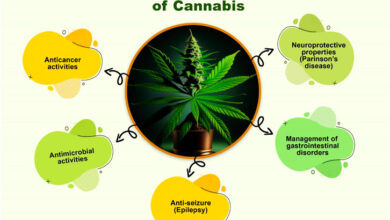Minimalist Packaging Is Out — Say Hello to Emotional Maximalism

There was a time when everything went white.
White space. Sans-serif fonts. Soft blush tones. A whisper of gold foil. The kind of packaging that didn’t so much speak as it politely nodded. It was serene, tasteful, “premium.”
Minimalism had its moment. And for a while, it worked.
But we’re not in that world anymore.
Today’s consumers are anxious, overstimulated, and craving something real. Something loud, joyful, maybe even a little chaotic — like a friend who shows up blasting music and handing you a cookie and a crisis in the same breath.
And that’s where emotional maximalism comes in.
This isn’t just a design shift. It’s a cultural correction.
Quiet Luxury? Try Loud Honesty
Minimalism was rooted in control. It told the consumer, “Trust us. We’re curated. We’re calm. We’re better than trends.”
But emotional maximalism says something different: “Here we are. All of us. Messy. Glorious. Unfiltered. You too?”
This isn’t about throwing neon on every box or adding glitter for the sake of drama. It’s about showing feeling.
You’re no longer just selling a product. You’re offering:
- Relief
- Delight
- Chaos
- Identity
- Comfort
- Rebellion
If your packaging doesn’t feel like something, it might as well be a placeholder.
Maximalism = Permission to Be Specific
Here’s the mistake brands make when they try to “keep it clean”: they become generic.
You’ve seen it:
- The same muted beige bottle with the lowercase serif font.
- The same uncoated paper and “conscious” feel.
- The same copywriting that says “elevated,” “natural,” and nothing else.
But maximalist packaging doesn’t try to blend in — it declares.
And declaration is magnetic.
Let’s say you make a healing treat. On your custom nutraceutical labels, instead of:
“Handcrafted dark chocolate with THC Himalayan salt.”
Try:
“For breakups, deadlines, and ‘I’ll call you right back’ lies.”
Suddenly, it’s not just a chocolate bar. It’s an emotional support snack. That’s maximalism.
The Power of Feeling-Led Packaging
Emotional maximalism isn’t random. It’s intentional overload — in service of connection.
Here’s what that might look like in practice:
H2s That Cry, Scream, or Swoon
Let your headers on boxes act like humans. Forget sterile statements like “moisturizing lip balm.”
Try this on your lip balm labels:
“Kiss your existential dread goodbye.”
Layered Color Palettes
Think clash, not coordination. Colors that evoke memory, tension, or nostalgia. Packaging that looks like a 1997 sticker album exploded — but on purpose.
Imperfect Typography
Use type that feels hand-drawn or distressed. Don’t aim for clean — aim for alive.
Collage and Texture
Overlays. Photocopy grain. Doodles. Bits of real handwriting. Designs that feel like they came out of someone’s diary or dream journal.
The point isn’t polish. The point is presence.
Small Brands Are Leading the Charge
Big brands have the money, but small brands have the guts.
Look at indie perfume lines, Gen Z snacks, or direct-to-consumer wellness startups.
You’ll find:
- Glossy packaging that screams rather than soothes
- Illustrations that feel like personal tattoos
- Copy that overshares — and earns trust for it
These aren’t accidents. These are brands embracing a truth we’ve all felt:
People don’t want to buy “refined.” They want to buy relatable. Emotive. Specific. Bold.
Use Labels and Tissue Paper as Emotion Amplifiers
Custom labels and tissue paper are no longer just decoration. They’re tools of emotional storytelling.
Use them to layer experience.
- Add a surprise phrase under the flap of your candy box:
“You deserve good things. Start here.” - Print patterns on your custom lotion labels that feel like fabric from your grandmother’s couch or the inside of a vintage comic book.
- Make the shipping insert read like a breakup letter or a love note — whichever fits your brand’s vibe.
Every layer of your unboxing moment can say something. Not about product specs. About feeling.
But What If It’s “Too Much”?
That fear is real. Emotional maximalism can feel risky.
You might wonder:
- “Will this turn people off?”
- “Is this too loud?”
- “What if people don’t get it?”
But remember: people remember what makes them feel.
The packaging you think is “too much” might be the exact thing someone screenshots and shares.
The box someone keeps, long after they finish the product. The thing that makes your brand not just seen — but felt.
Final Thought: Packaging Isn’t Art Direction — It’s Mood Direction
Your box isn’t a canvas for prettiness. It’s a container for emotion.
So if your packaging still whispers, maybe it’s time to let it sing. Or cry. Or dance on the table in cowboy boots.
Minimalism had a point — and a season.
But this moment? This moment wants to feel something.
So give it to them.
Say goodbye to safe. Say hello to human. Design for the heart, not the algorithm.
And remember:
Feeling sells more than features ever will.



